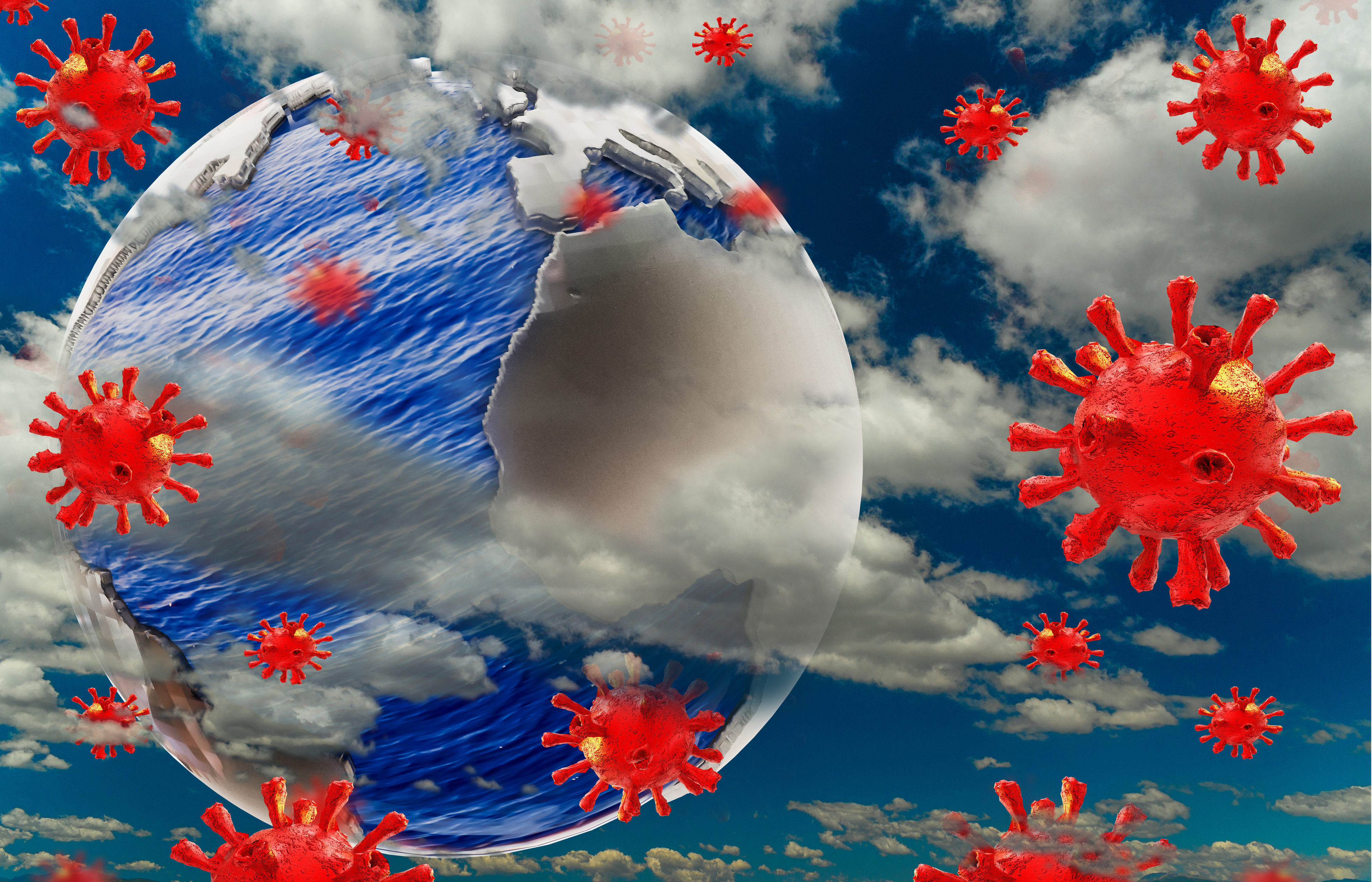By all accounts infection rates have ebbed. But were we good or were we lucky?
The rituals of fall in the northern hemisphere now include preparing for flu season — and a fresh variant of COVID-19. This time it is EG.5 (nicknamed Eris, after the Greek goddess of strife and discord), a subvariant of Omicron. It is already the most common subvariant in the United States, Canada and several Asian countries.
Being a subvariant, EG.5 is not deemed a great public health threat, though it has been identified as a “variant of interest” by the World Health Organization (WHO). By all accounts, COVID-19 has ebbed, vaccines work, herd immunity levels have been attained in some parts of the world, and so infection rates, and with them morbidity and mortality rates, have dropped from their peaks in early 2021 and 2022.
Phew. But were we good or were we lucky?
There is much to celebrate about the abatement in every dimension of COVID and the incredible response of the scientific community to provide diagnostics, vaccines and other therapeutics in record time. But even at its worst, COVID-19 was not as virulent or deadly as viruses can be. The truth is that scientific ingenuity has not been met by ingenuity in governance.
The extent of new variants remains uncharted because many countries have reduced or stopped surveillance and widespread testing of suspected COVID-19 cases. Masking in public places and other precautionary measures have become exceptional. But what if? What if a deadly variant emerges in the parts of the world — Africa and low-income countries more broadly — where the share of persons vaccinated with at least one dose remains below 40 percent? In rich countries, what if we let our guard down too much? And what about the next time, in a different era and facing a different virus?
For we know there will be a next time. This is where the failure to address core inequities in our innovation system will most reverberate: the challenge is not just scientific but also to our ability to translate scientific success into public good.
Missed opportunities abound.
In October 2020, foreseeing what later transpired, India and South Africa proposed that the World Trade Organization temporarily ease intellectual property (IP) barriers, such as the patents enshrined in its TRIPS Agreement on trade-related IP rights, to enable the rapid production and distribution of vaccines and therapeutics. Although dozens of countries — including, initially, the United States — supported this proposal, the eventual agreement in June 2022 was an insipid version of the original vision. In parallel, the scenario the waiver was intended to avoid unfolded, laying bare the fault lines of the current system.
Far from the industry-promoted chimera of bold private sector risk-taking in the face of long odds, vaccine development is a patient, long-term endeavour that is a triumph of public-private partnership. Much of the basic research that led to messenger RNA–based vaccines was publicly funded over decades (mainly in the United States, the United Kingdom and EU countries). Additional public funding accelerated research on COVID-19–specific vaccines. Pre-commitments to purchase large amounts of a successful vaccine, and reduced costs and procedures for trials, rounded out the subsidy regime for vaccine manufacturers.
By the time the first COVID-19 vaccines appeared in the West, the process had been mostly de-risked for Big Pharma, thus creating “the vast debacle that is vaccine inequity.”
Oligopolies did what oligopolies will do, using their market power to negotiate the best deals for their shareholders, under layers of confidentiality. The European Union paid less than half the price South Africa did for the Oxford-AstraZeneca vaccine, despite having four times South Africa’s per capita income. Moderna got into a dispute, still unresolved, with the National Institutes of Health over co-inventorship of its vaccine. Well into the post-vaccine era, many countries in Africa had derisory rates of vaccine availability — a lag that persists to this day. The global response to address COVID-19, the Access to COVID-19 Tools Accelerator, remains underfunded. For 2022–2023 alone, funding needs of $386 million face a shortfall of $247 million.
Moreover, COVID-19 is only part of the public health landscape. The African Union has set a target of producing 60 percent of the continent’s vaccine needs at home by 2040 (it is currently at one percent). But even this modest target is widely considered ambitious, relies heavily on foreign funding, and faces barriers seemingly built into the current innovation and IP system.
Trials — funded by the Gates Foundation and the Wellcome Trust — of the first promising tuberculosis (TB) vaccine in a hundred years, are to start soon. Reminiscent of the situation in 2021 between the foundation and Oxford University (whereby the foundation was accused of discouraging Oxford from providing its COVID-19 vaccine at zero or low cost, instead urging it to enter into a more commercial agreement with the biotech company AstraZeneca), the nature of the arrangement between the foundation and the TB vaccine’s developer, GSK, is not clear.
This matters for many reasons, not least that the AS01 adjuvant system used to increase the vaccine’s efficacy has potential for other drugs. One of its components, QS-21, is cultivated by Indigenous peoples in Chile, raising the question of whether QS-21 is “the product of bioprospecting or biopiracy.” Put plainly, the question is how, if at all, the cultivators will benefit commercially, should the vaccine be deployed globally.
Fifty years ago, when the world was preoccupied with hunger and malnutrition, the global community banded together to fund the Green Revolution and the CGIAR, the global network of agricultural research centres that has produced significant advances in food and agricultural technology and policy. Although not without critics, these collaborations are exemplars of harnessing science and innovation for the public good.
Are current governance structures fit for purpose? We need only ask ourselves what the global response would be in 2023 were an innovator to unveil a game-changing technological counter to climate change. The core issue here is how to encourage the rapid and comprehensive uptake of technologies that exhibit positive externalities.
It has been said that a crisis is a terrible thing to waste. As things stand, we will be entering our next health crisis having largely wasted this one (which is still not over), leaving the underlying innovation and IP structures untouched. Rather than getting better, we will be counting on getting lucky yet again. Given the horrendous damage caused by the COVID-19 pandemic, this would be a tragic and foolish failure of governance.
This article was first published by Project Syndicate.






